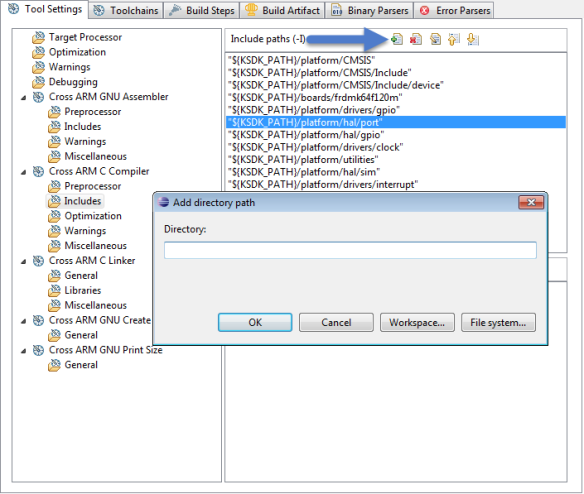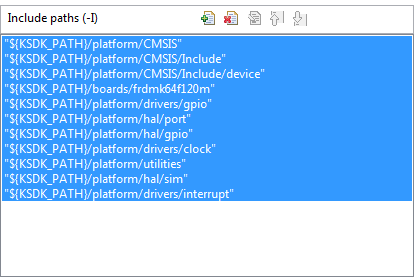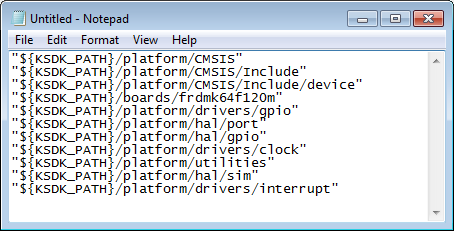Adding Multiple Include Paths to Build Settings in Eclipse
Join the DZone community and get the full member experience.
Join For FreeIn Eclipse and CDT, I need to tell the compiler where it has to search for the header files. The normal way is to go to the compiler settings (menu Project > Properties > C/C++ Build > Settings) and then add the include paths, one by one, using the ‘+’ icon:
But for many include paths, this is a time-consuming process. But there is another way.
Copy-Paste
The trick is that this ‘list of items’ control in the compiler settings work with copy and past shortcuts (CTRL-C and CTRL-V on Windows). This is especially useful if I have an existing project with all the paths setup: I can select (use CTRL to select multiple items individually, or CTRL-A (for all, on Windows) to select all items in the list:
Then press the host operating system shortcut for copy (CTRL-C on Windows), go to your destination panel and use the paste (CTRL-V on Windows) shortcut, and all the paths get copied. This approach works for all ‘list’ setting items, e.g. linker library settings.
:idea: Unfortunately Eclipse does not show a context menu for the copy/paste operation in the settings panel. But you can use copy-paste for pretty much every setting, as long as you copy normal text.
Another trick is to use a clipboard viewer or a text file. As the format used is simple text list of items, it is possible to create a file or edit the items in a text editor:
That way I can use a script or anything I want to create that list of items, then copy-paste it into the settings.
Summary
Copy-Paste is a fast way to apply large sets of path (or list of items). That way I can easily copy settings from an existing project. Or I can create a list of folders in text file and then apply them all in one step. That way I can easily assign multiple items in a single step.
Happy Including :-)
Published at DZone with permission of Erich Styger, DZone MVB. See the original article here.
Opinions expressed by DZone contributors are their own.




Comments